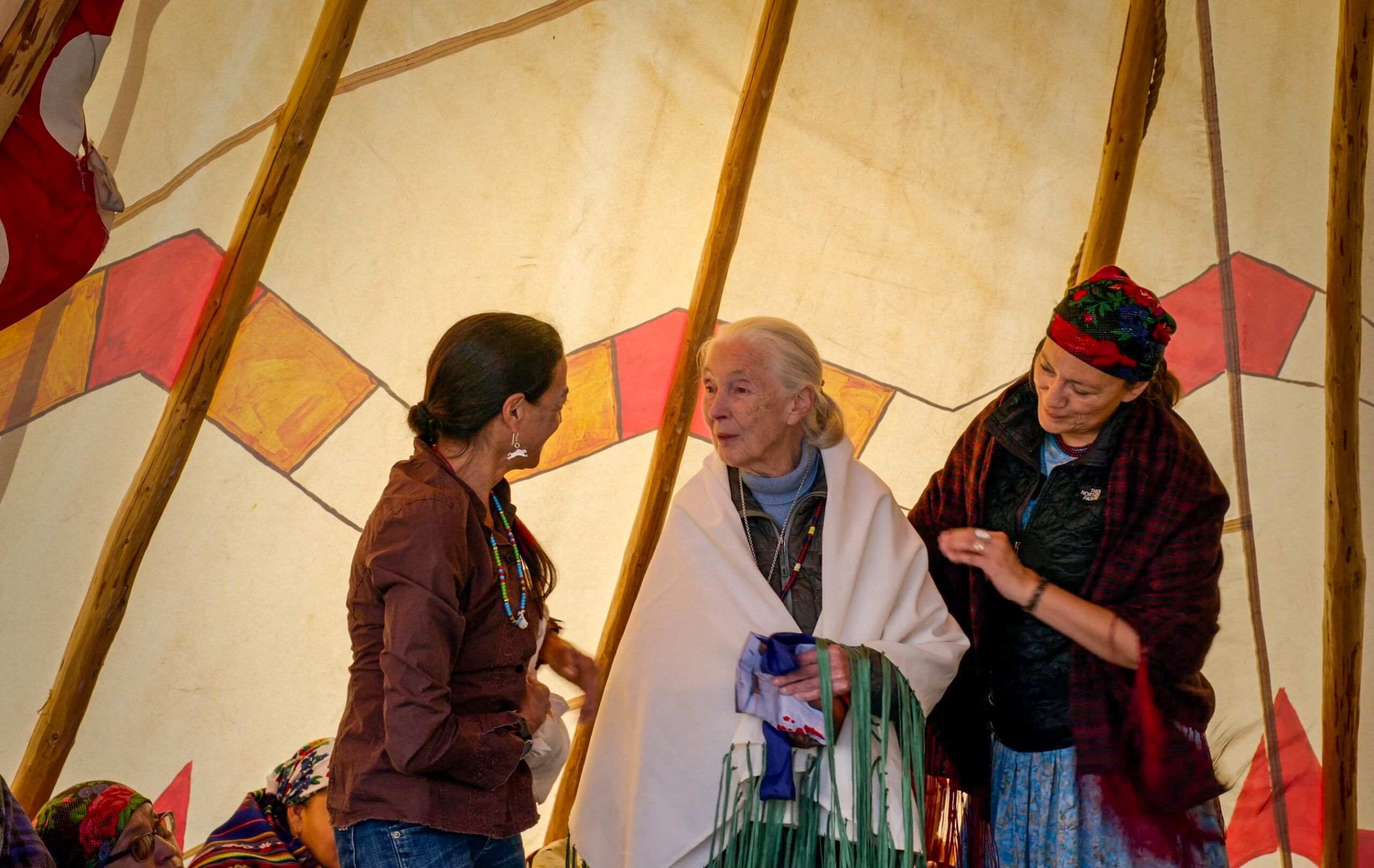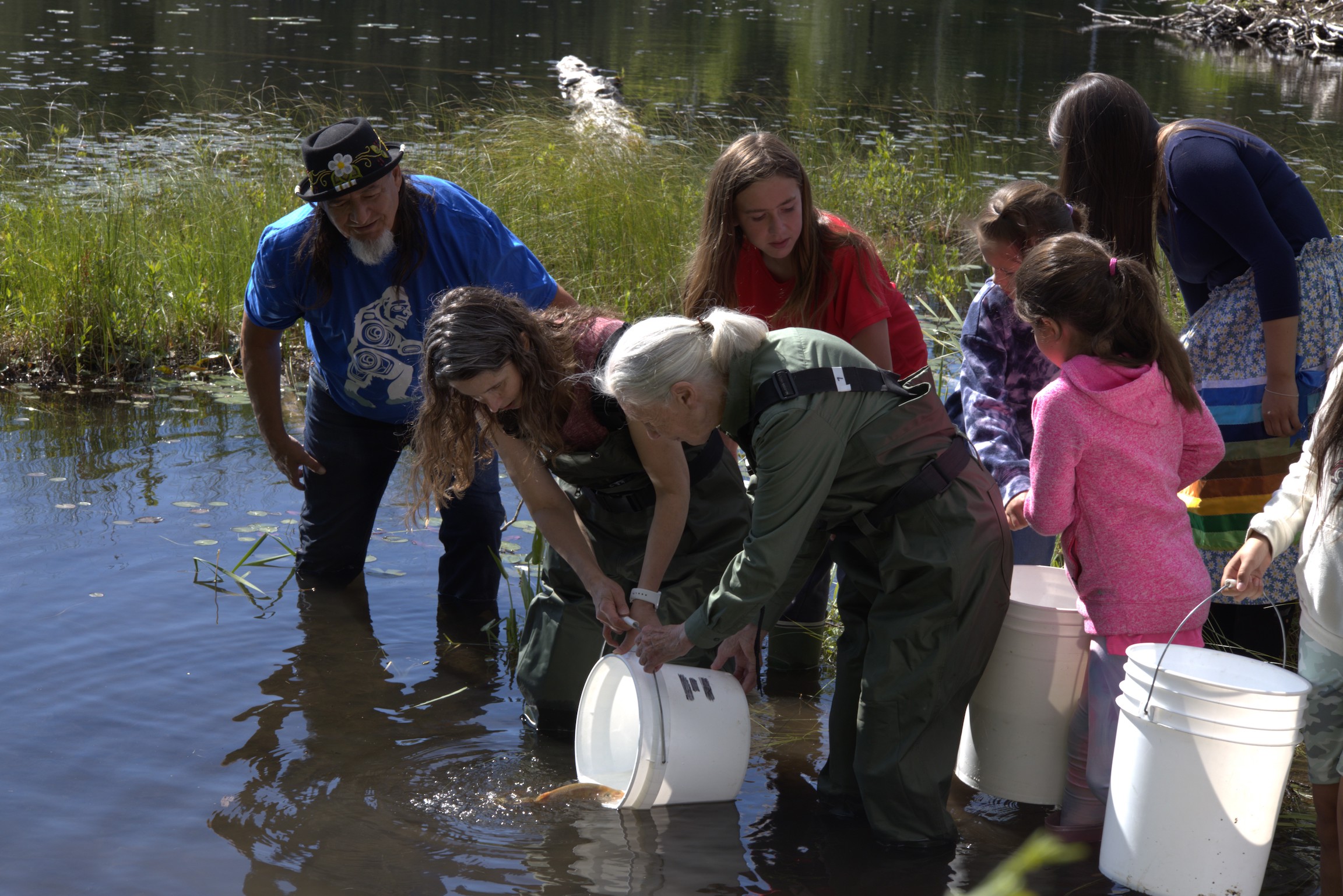By Shelby Tuttle
On the morning of June 2, I ventured through Downtown Phoenix, battling a sea of costumed enthusiasts eagerly vying for early access to the opening day of Phoenix Fan Fusion. I patiently waited to make a right onto Washington, anxiety mounting, as time ticked by and visions of an embarrassingly late arrival drifted through my thoughts. “I can’t be late for this,” I thought. “I cannot be late for Jane Goodall!”
As I resigned myself to accepting the traffic snafu, my memory drifted back to my childhood, watching specials about Jane Goodall on TV with my parents in the 80s. I equated her to a kind of royalty — as esteemed as Queen Elizabeth, but reigning over a different kingdom of sorts — a leader with a prolific presence and emboldened voice for a planet and various species which cannot speak.
I thought back to my various conversations with multiple 20-somethings about Goodall earlier in the week, and wondered, ‘How can they not know who she is?’
As I pulled into my parking space, I realized that if I walked quickly, I would make it on time. I entered the theater inside the Arizona Science Center to join a handful of other journalists, reporters, and writers to preview Goodall’s newest film, “Reasons for Hope.”
Following a screening of the 45-minute documentary, we filed into a room for an opportunity to converse with Goodall and the film’s director, David Lickley.
I took a moment to appreciate the opportunity. “How did we get so lucky?” I asked myself.
As Goodall took her seat at a table adorned with microphones, she struck me as somewhat paradoxical. Here sat one of the boldest, bravest, and loudest activists of the last 60 years and she appeared to be almost … delicate. She was small in stature, her voice soothing and soft. Her demeanor was confident but quietly composed.
“Captivating,” I thought.
The rest of the room appeared to be as awestruck as I was. Goodall commands more than respect — the sense of reverence among us was unmistakable. We hung on her every word.
Just minutes into our group interview, Goodall was asked to do her famous chimpanzee call. She began to quietly pant and holler, her vocal intensity growing with each sound.
“Me Jane,” she said.
Lickley turned to her to ask how many times she’s performed the call in her lifetime — she surmised more than a couple thousand.
As conversation turned to the movie, Lickley provided perspective on how the film came to be. As it turns out, the idea — conceived from Goodall’s books published in the early 2000s — was more than 10 years in the making. The pair agreed on the message for the documentary in 2010, but the project took a decade to fund. At the beginning of 2020, with production off and running for just one month, the film’s progress was delayed for a year due to COVID. Once back up, the film was delayed yet again when a crew member and Goodall herself came down with separate instances of the virus.
“I just had a cough for two days. A fever for maybe four hours, and that was it,” Goodall said matter-of-factly.
When asked what she learned from filming, she referenced a portion of the film in which she traveled to Austria to observe a reintroduction program for Northern Bald Ibises.
“They’re amazing birds,” she said. “I met one of them. His name was Rubio, and he was allowed to come and sit on my shoulder. In the film it says they feel the world with their sensitive beaks — bills — whatever they’re called, and to my amazement, it was warm. I felt it. And I fell in love with Rubio, totally.”
To get a true sense of the program, Goodall traveled in a microlight used to teach the Ibises how to migrate correctly to Italy. Her sense of independence, adventure, and a hint of mischief are revealed during our discussion.
“Jane’s people that look out for her insisted she not go up in the microlite,” Lickley said. “I was thrilled that she even said she wanted to. Her people said ‘No.’” He continued, “But she came without all her people one day and she said ‘I wanna do this. In fact, the only way I’ll go is if I can do this.’ So we said ‘Okay.’”
Jane recounts a somewhat scary moment when the microlight suddenly dropped in elevation. “I think everyone on the ground was horrified. Anyway, we straightened out — he was a great pilot.”
Throughout the film, Goodall and her team visit various locations across the globe to share examples of Goodall’s four pillars of hope: the amazing human intellect, the resilience of nature, the power and dedication of young people, and the indomitable human spirit.
The film’s opening project documents a regreening project in Sudbury, Ontario that has revived the lakes, natural landscape, and native wildlife following catastrophic destruction of the area. An overabundance of sulfur dioxide and metals released from the smelting of nickel ore poisoned the land for several decades. We see her work alongside youth volunteers to replant trees — over 10 million have been planted in the area over the last 45 years. In this moment, Goodall pauses to kiss the sapling before she puts it in the ground, noting that she wants to give energy to the tree, and she wants energy from the tree, as well.
From there, Goodall and the crew spend time on the Blackfeet Nation in Montana, where viewers are able to get a firsthand look at an unprecedented program that is reintroducing American Bison to the wild in the U.S. Once nearly extinct, there are now more than 800 bison and counting in the Blackfeet Nation’s herd, which roam more than 10,000 acres in the southeast end of the tribe’s reservation.

The film also finds Goodall right here in Arizona, highlighting various climate change initiatives including Arizona Public Service’s efforts to advance alternative energy strategies, along with a ground-breaking project from Arizona State University, home to the Jane Goodall Institute’s Gombe Research Archive. Goodall visits with ASU engineering professor Dr. Klaus Lackner, whose research pioneered the creation of the MechanicalTree; a massive cylindrical device that extends to a height of 33 feet to collect carbon from the air, then stores the carbon in underground tanks to be used to initiate plant growth in greenhouses. The first commercial-scale device of its kind, the MechanicalTree is said to be capable of scrubbing the same amount of carbon dioxide from the air as one thousand real trees.
“Completely amazing watching this huge structure go up and up and up and all these little round — they call them mechanical leaves — and up there these leaves absorb CO2,” Goodall mused.
For the film’s fourth and final highlight, viewers are taken on a magical ride with Goodall in the aforementioned microlight to document the process of migration of the Northern Bald Ibis over the Alps. Viewers are treated to visually spectacular footage from the flight, waiting with bated breath as the birds fly alongside the aircraft to learn the route to their new home. The film also highlights the untapped potential of young people through Goodall’s Roots & Shoots program, which works in 65 countries to create change in their communities.
Later, given a few minutes alone with Dr. Goodall, I couldn’t help my mind from wandering back to earlier in the week, somewhat shocked at my conversations with various 20- and 30-somethings who didn’t know of Goodall’s work or understand my excitement at the opportunity to speak with her. Although the younger generations of today may not always know exactly who Goodall is or what she’s done to advance the progress for a myriad of causes they care about, her belief in the younger generation is unwavering.
When asked who will carry the torch for environmental and animal activism after her, Goodall answered, “Hundreds of thousands of young people who are growing up with this determination to make a difference and [who are] much more aware. I mean, when I was young, we didn’t have these problems.”
She continues, “The main message is remember [that] every single day you live, you make an impact on the planet, and you choose what sort of impact you make.”
She emphasizes that the challenges we are facing are multiple, and that they are all interconnected.
“You know, industrial agriculture, the use of pesticides, herbicide killing the soil, the deforestation, the filling in of wetlands, the industrial and household and agricultural waste that’s causing this acidification in the ocean…I mean, we need to tackle them all,” she said. “Because all of them are basically leading to climate change and loss of biodiversity.”
I asked her where a good place might be to start making an impact for those who are overwhelmed or convinced that the damage to our planet is irreversible — a belief that the film proves to be a fallacy in several instances.

She replied, “I mean, people become depressed and feel helpless because they think of the problems of the planet. And one person can’t do anything about that. So I always say to them — we have this silly phrase — think globally, act locally. It’s the wrong way ‘round.” She continued, “Stop thinking globally, you can’t do anything about that. But think in your community … is there something you care about? Trash in the streets, homelessness, stray dogs, whatever it is. See what you can do and inspire others to join you. And then you’ll see you are making a difference … then you’ll feel more hopeful about the global problem.”
Goodall’s “Reasons for Hope” will play at the Arizona Science Center through the end of August, with five showtimes each day. To purchase tickets, visit www.azscience.org/attractions/irene-p-flinn-theater.
Read more Good articles on Green Living.






